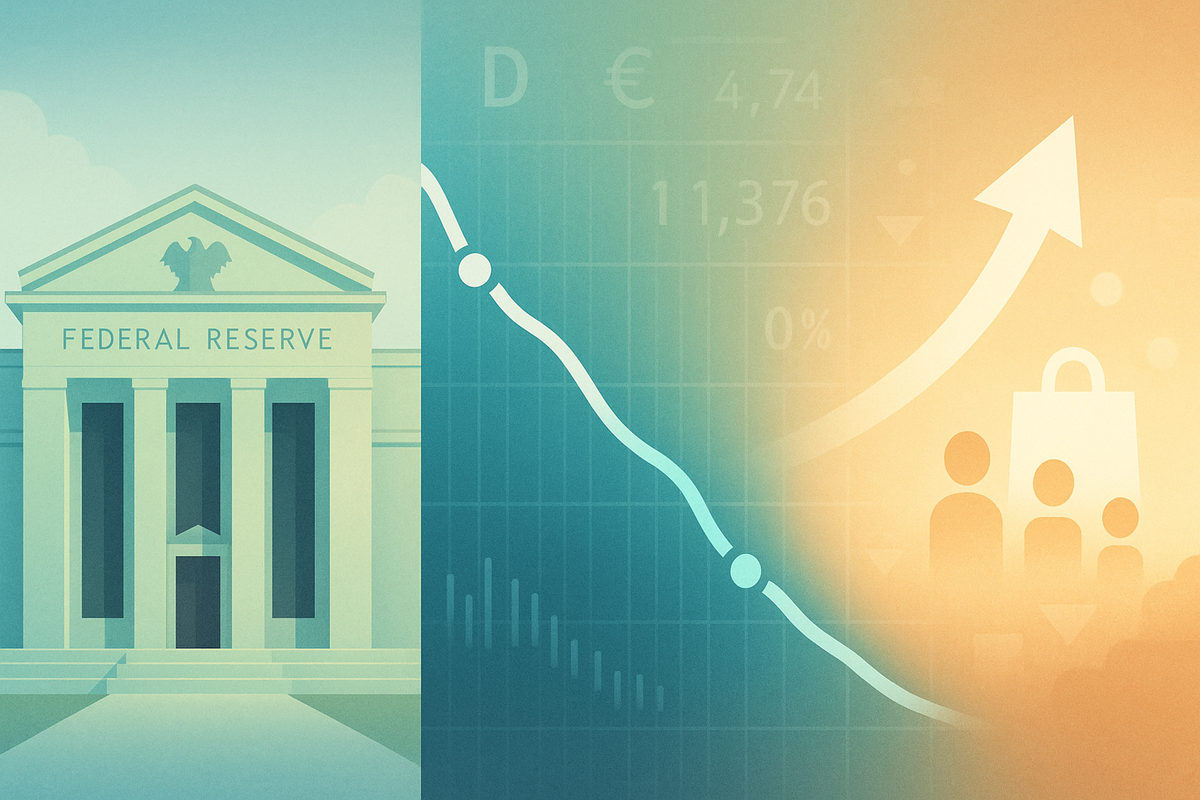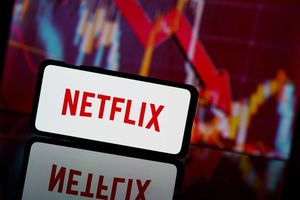
The financial markets are abuzz with growing anticipation of interest rate cuts by the Federal Reserve, a sentiment largely driven by a noticeable shift in the central bank's rhetoric. Recent statements from various Federal Reserve speakers, including those traditionally considered hawkish, have adopted a decidedly more dovish tone. This pivot suggests that a slowdown in job growth and moderating consumer spending might prompt the Fed to cut rates sooner than previously expected, sending ripples of optimism and uncertainty across global financial landscapes.
This evolving stance from the Federal Reserve has immediate and significant implications for investors, businesses, and consumers alike. Lower interest rates typically translate to cheaper borrowing costs, potentially stimulating economic activity, but they also signal underlying concerns about the health of the economy. The market is now keenly watching for concrete actions, with probabilities for a September rate cut surging, setting the stage for a potentially transformative period for various asset classes.
The Fed's Pivotal Shift: What Happened and Why It Matters
A significant shift in the Federal Reserve's monetary policy outlook has become increasingly apparent, moving away from its previous "higher for longer" narrative to one that strongly hints at imminent rate reductions. This change is not merely a subtle adjustment but a marked pivot, driven by a confluence of economic indicators that suggest a cooling economy.
The timeline of this shift can be traced back to the July Federal Open Market Committee (FOMC) meeting minutes, which revealed a "marked shift toward a dovish tone." Discussions within the committee increasingly focused on the risks of an economic slowdown, rising unemployment, and the potential for a deeper recession. While maintaining a commitment to the 2% inflation target, the Fed is now clearly incorporating a broader range of economic indicators, including consumer spending and global trends, into its decision-making process.
Key players have been instrumental in signaling this change. Federal Reserve Chair Jerome Powell, despite previously asserting the economy was in a "solid position," delivered a "more dovish than expected" speech at the Jackson Hole symposium. He explicitly stated, "The time has come for policy to adjust. The direction of travel is clear, and the timing and pace of rate cuts will depend on incoming data, the evolving outlook, and the balance of risks." Powell's emphasis that "We do not seek or welcome further cooling in labor market conditions" underscored the Fed's growing concern for employment stability.
Adding to the chorus, Minneapolis Fed President Neel Kashkari, previously known for his hawkish views, has adopted a notably dovish stance. On August 6, 2025, he articulated that the "real underlying economy is slowing," citing declining services inflation, stagnant wage growth, and cooling consumer spending. Kashkari's assertion that the case for a near-term interest rate cut has strengthened, and that two rate cuts this year still seem reasonable, highlights the urgency within some segments of the Fed to respond proactively. Similarly, Federal Reserve Governor Cook described the July employment report as "concerning," suggesting a potential "turning point" for the U.S. economy. Even traditionally hawkish members like Vice Chair for Supervision Michelle Bowman and Governor Christopher Waller dissented at the July FOMC meeting, advocating for an immediate 25-basis-point rate cut to preempt labor market deterioration – a rare occurrence not seen since 1993.
The primary catalyst for this dovish pivot is recent economic data, particularly the July employment report, which showed the U.S. economy added only 73,000 jobs, significantly below expectations. This was compounded by substantial downward revisions for the prior two months, totaling nearly 260,000 jobs. The three-month average increase in nonfarm payrolls plummeted to just 35,000, the lowest in five years, and the unemployment rate rose from 4.1% in June to 4.2% in July. This marked slowdown in job growth directly challenges the Fed's previous "wait and see" approach. Concurrently, cooling consumer spending, which accounts for nearly 70% of GDP, is showing signs of strain. The first reading of Q2 2025 GDP indicated a noticeable slowdown in personal consumption expenditures growth. While June retail sales saw a modest rise, the overall trend in 2025 has been a "noticeable flat lining" after robust post-pandemic gains. Consumer sentiment has softened due to worries about tariff-induced price hikes, a cooling jobs market, and swings in household wealth.
Initial market reactions have been swift and pronounced. Expectations for interest rate cuts have surged, with the CME FedWatch Tool indicating the probability of a 25-basis-point cut in September jumping from approximately 40% to over 80%. Markets are now pricing in two rate cuts by year-end. The bond market reacted immediately, with Treasury yields dropping significantly after the weak July employment report; the benchmark 10-year yield plummeted 14 basis points to 4.23%. Equity markets in the Asia-Pacific region traded higher, mirroring a strong bounce on Wall Street, while the U.S. Dollar has weakened against other major currencies, reflecting the dovish Fed expectations. The cryptocurrency market also saw a "short-term booster," with expectations that more relaxed money could flow into assets like Bitcoin and Ethereum.
Navigating the Tides: Potential Winners and Losers
The Federal Reserve's increasingly dovish stance and the growing likelihood of interest rate cuts will undoubtedly create a distinct landscape of winners and losers across various sectors and companies. Lower borrowing costs typically favor certain industries while posing challenges for others, leading to strategic re-evaluations for many public entities.
Potential Winners:
- Growth Stocks and Technology Companies: Companies that rely heavily on future earnings growth and often require significant capital investment stand to benefit substantially. Lower interest rates reduce the cost of borrowing for expansion, research and development, and acquisitions. Technology giants like Apple (NASDAQ: AAPL), Microsoft (NASDAQ: MSFT), and Amazon (NASDAQ: AMZN), which often fund their ambitious projects through debt, could see improved profitability and higher valuations as their discount rates decrease. Smaller, high-growth tech startups might also find it easier to secure funding and scale their operations.
- Real Estate and Housing Sector: A reduction in interest rates directly translates to lower mortgage rates, making homeownership more affordable and stimulating demand. This could provide a much-needed boost to homebuilders like D.R. Horton (NYSE: DHI) and Lennar Corporation (NYSE: LEN), as well as real estate investment trusts (REITs) such as Simon Property Group (NYSE: SPG). The entire housing ecosystem, including mortgage lenders and home improvement retailers like Home Depot (NYSE: HD), could experience increased activity.
- Consumer Discretionary Companies: With potentially lower borrowing costs for consumers (e.g., credit cards, auto loans), disposable income might increase, leading to higher spending on non-essential goods and services. Retailers like Target (NYSE: TGT) and Walmart (NYSE: WMT), automotive manufacturers such as General Motors (NYSE: GM) and Ford (NYSE: F), and leisure and hospitality companies could see a rebound in demand.
- Companies with High Debt Loads: Businesses that have accumulated significant debt will benefit from lower interest payments, improving their cash flow and profitability. This could be particularly impactful for highly leveraged sectors or individual companies that have been struggling under the weight of higher rates.
- Emerging Markets and Commodities: A weaker U.S. Dollar, a common consequence of dovish Fed policy, makes investments in emerging markets more attractive to international investors. It also tends to boost commodity prices, as they become cheaper for buyers holding other currencies. Companies involved in commodity production or with significant exposure to emerging markets could see increased demand and revenue.
Potential Losers:
- Banks and Financial Institutions: While lower rates can stimulate lending volume, they typically compress net interest margins (NIMs), which is the difference between what banks earn on loans and what they pay on deposits. This can reduce profitability for major banks like JPMorgan Chase (NYSE: JPM), Bank of America (NYSE: BAC), and Wells Fargo (NYSE: WFC). However, increased loan demand from a stimulated economy could partially offset this.
- Value Stocks and Dividend-Paying Companies: In a low-interest-rate environment, the appeal of stable, dividend-paying stocks might diminish as investors seek higher returns in growth-oriented assets. While still offering stability, their relative attractiveness compared to growth stocks could wane.
- U.S. Dollar-Dependent Businesses: Companies that primarily operate within the U.S. and rely on a strong dollar for purchasing imports or maintaining competitive pricing might face headwinds as the dollar weakens. Conversely, U.S. exporters could benefit from a weaker dollar, making their goods more competitive abroad.
- Fixed Income Investors (Yield Seekers): Investors who rely on fixed-income assets for income will see lower yields on new bonds and other interest-bearing instruments. This forces them to take on more risk to achieve desired returns, potentially pushing them into equities or other riskier assets.
The impact on individual companies will depend on their specific financial structures, market positioning, and sensitivity to interest rate changes. Investors will need to carefully assess these factors as the Fed's policy shift unfolds.
Broader Implications and Industry Ripple Effects
The Federal Reserve's dovish pivot is not an isolated event but rather a significant development that fits into broader industry trends and carries substantial wider significance. Its ripple effects will extend beyond immediate market reactions, influencing competitive landscapes, regulatory considerations, and potentially drawing parallels to historical economic cycles.
This shift aligns with a global trend among central banks to reassess monetary policy in the face of slowing economic growth and persistent, albeit moderating, inflation. While some central banks, particularly in Europe, have already begun or are contemplating rate cuts, the Fed's move, given the U.S. economy's size and influence, sets a powerful precedent. It signals a collective recognition that the period of aggressive monetary tightening may be nearing its end, and that the focus is shifting towards supporting economic activity. This could lead to a more synchronized global easing cycle, potentially boosting international trade and investment.
The potential ripple effects on competitors and partners are considerable. For instance, in the technology sector, lower borrowing costs could intensify competition as companies find it cheaper to invest in innovation and market expansion. Smaller, agile startups might gain a competitive edge against larger, more established players if they can secure funding more easily. In the financial sector, while banks might face margin compression, non-bank lenders and fintech companies could see increased demand for their services as consumers and businesses seek more accessible credit. Partnerships between traditional financial institutions and fintech firms might also evolve, with a greater emphasis on leveraging technology to capture new market segments.
Regulatory and policy implications are also noteworthy. A sustained period of lower interest rates could prompt regulators to scrutinize lending standards more closely to prevent the build-up of excessive risk in the financial system. Policymakers might also face renewed pressure to address fiscal policy, as lower rates could make government borrowing more attractive, potentially leading to increased national debt. Furthermore, the Fed's emphasis on labor market conditions and consumer spending highlights a broader policy focus that extends beyond just inflation targeting, suggesting a more holistic approach to economic stability.
Historically, periods of Federal Reserve easing have often followed economic slowdowns or recessions. The current situation, with slowing job growth and consumer spending, bears some resemblance to past cycles where the Fed intervened to stimulate the economy. For example, the easing cycles following the dot-com bubble burst in the early 2000s or the 2008 financial crisis saw significant rate cuts aimed at re-igniting growth. While the current economic backdrop is distinct, these historical precedents suggest that the Fed is acting preemptively to cushion a potential downturn rather than reacting to a full-blown crisis. The challenge for the Fed will be to engineer a "soft landing" – bringing inflation down without triggering a severe recession – a feat that has historically proven difficult. The current dovish pivot suggests the Fed is prioritizing the avoidance of a deep recession, even if it means a slightly slower path to the 2% inflation target.
What Comes Next: Navigating the Evolving Landscape
The Federal Reserve's dovish pivot sets the stage for a dynamic period in the financial markets, with both short-term adjustments and long-term strategic considerations coming into play. The immediate focus will be on the timing and magnitude of the anticipated interest rate cuts, while the longer-term outlook will depend on how the economy responds and how the Fed continues to adapt its policy.
In the short term, market participants will be keenly watching for further economic data, particularly inflation reports, employment figures, and consumer spending trends. Any significant deviation from the current trajectory could influence the Fed's decision-making process. The September FOMC meeting is now widely seen as the most likely juncture for the first rate cut, and the market will scrutinize every word from Fed officials leading up to and following that meeting. Companies will need to assess their immediate capital expenditure plans, debt refinancing opportunities, and pricing strategies in anticipation of lower borrowing costs. For consumers, the immediate impact could be seen in slightly lower rates for new mortgages, auto loans, and potentially credit card interest rates, which could encourage spending on big-ticket items.
Looking further ahead, the long-term possibilities include a sustained period of lower interest rates if economic growth remains subdued or if inflation continues to trend downwards. This could lead to a prolonged environment of cheaper credit, potentially fueling investment and innovation across various sectors. However, there's also the risk that if the economy rebounds too strongly or if geopolitical events lead to supply shocks, inflation could re-accelerate, forcing the Fed to reverse course or pause its easing cycle. This uncertainty necessitates strategic pivots and adaptations for businesses. Companies might need to re-evaluate their capital structures, potentially shifting from equity financing to debt financing if the cost of borrowing becomes significantly more attractive. Businesses with international operations will also need to consider the implications of a weaker U.S. Dollar on their global revenues and supply chains.
Market opportunities and challenges will emerge from this evolving landscape. For investors, the shift could present opportunities in growth stocks, real estate, and potentially emerging markets, as these assets tend to perform well in a lower-rate environment. However, challenges include lower returns on traditional fixed-income investments and potential volatility if economic data surprises or if the Fed's communication creates confusion. Companies in interest-rate sensitive sectors, such as banking and insurance, will need to adapt their business models to navigate potentially compressed margins.
Several potential scenarios and outcomes could unfold. In an optimistic "soft landing" scenario, the Fed successfully cuts rates, stimulates economic activity, and avoids a recession, with inflation gradually returning to target. In a more pessimistic "hard landing" scenario, the rate cuts prove insufficient to prevent a recession, or inflation proves more persistent, leading to a period of stagflation. Another scenario involves a "stop-go" policy, where the Fed cuts rates, then pauses, then cuts again, reacting to fluctuating economic data, which could lead to increased market volatility. The most likely outcome, as suggested by the Fed's current tone, is a proactive easing cycle aimed at preventing a deeper economic downturn, with the pace and extent of cuts being data-dependent.
Conclusion: A New Chapter for Monetary Policy
The Federal Reserve's recent dovish pivot marks a significant turning point in monetary policy, signaling a proactive approach to address slowing economic growth and moderating consumer spending. The key takeaway is that the central bank is increasingly concerned about the health of the labor market and the broader economy, moving beyond a singular focus on inflation to embrace a more balanced mandate. This shift, driven by weaker-than-expected job reports and signs of cooling consumer demand, has rapidly recalibrated market expectations, with a September interest rate cut now appearing highly probable.
Moving forward, the market will be characterized by heightened sensitivity to economic data and Federal Reserve communications. Investors should anticipate continued volatility as the market digests incoming information and attempts to predict the Fed's next moves. The implications for various asset classes are clear: lower rates generally favor growth stocks, real estate, and potentially commodities, while posing challenges for traditional fixed-income investments and potentially compressing bank margins. The U.S. Dollar is likely to remain under pressure, which could benefit U.S. exporters and emerging markets.
The lasting impact of this policy shift could be profound. If the Fed successfully engineers a "soft landing," it could set a precedent for how central banks navigate periods of economic deceleration without triggering severe recessions. However, the risk of miscalculation remains, and investors should watch for any signs of persistent inflation or a deeper economic contraction that could force the Fed to alter its course. Key indicators to monitor in the coming months include inflation reports, particularly core inflation, further labor market data, consumer confidence surveys, and corporate earnings reports, which will provide crucial insights into the real economy's response to the Fed's evolving stance. The coming months will undoubtedly be a critical period for investors and businesses alike, as they adapt to a new chapter in monetary policy.





